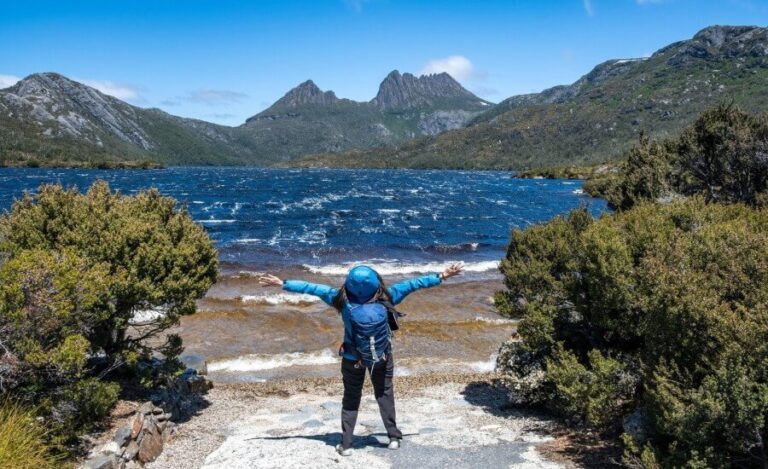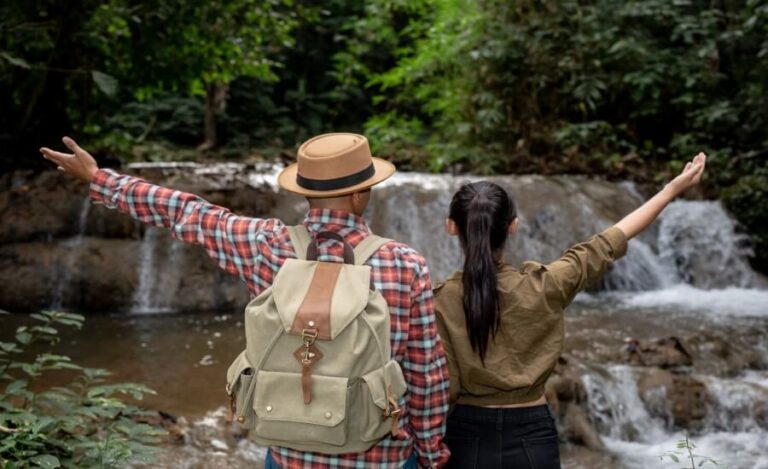
Descending beneath the waves is like entering another dimension. The world transforms – sound warps, colours shift, gravity yields to near-weightlessness. For many, scuba diving is an exhilarating adventure, a quest to witness the incredible biodiversity hidden beneath the surface. Often, dives become a checklist: “Did you see the turtle? The shark? The rare nudibranch?” We collect sightings like trophies, sometimes rushing, focused on finding the ‘next big thing’, our attention scattered.
But what if diving could be more? What if it could be a profound practice in mindfulness, a moving meditation that enhances not only our connection to the underwater world but also our respect for its inhabitants? Imagine descending with calm intention, focusing on your breath, moving slowly, and truly observing the intricate dance of life around you, not just glancing and moving on. This is the essence of mindful scuba diving. This guide explores this approach, outlining its principles, benefits, and crucially, Where to Practice Mindful Scuba Diving to Observe Marine Life Respectfully, highlighting global destinations where the environment and ethos support a deeper, more conscious underwater experience.
What is Mindful Scuba Diving? Beyond Buoyancy & Buddies

Mindful scuba diving integrates core mindfulness principles – present moment awareness, non-judgment, and intentional focus – into the entire diving experience, from preparation to post-dive reflection. It goes beyond simply mastering technical skills like buoyancy control (though excellent buoyancy is fundamental) and adhering to safety procedures with your buddy. It’s about cultivating a specific state of calm, focused awareness underwater.
Key elements include:
- Breath Awareness: Consciously noticing the rhythm and sensation of your breathing through the regulator. Your breath is your anchor to the present moment underwater, influencing buoyancy and calmness.
- Slow, Deliberate Movement: Finning gently and purposefully, minimizing unnecessary motion. Moving slowly reduces disturbance to marine life and conserves energy (and air!).
- Heightened Sensory Engagement: Actively tuning into the unique sensory landscape – the muffled sounds, the feeling of water pressure, the subtle shifts in temperature, the vibrant visual details.
- Non-Judgmental Observation: Observing marine life and the environment without labeling, judging, or imposing expectations. Simply witnessing what is there with curiosity and openness.
- Prioritizing Presence over Performance: Letting go of the pressure to see specific things or cover large distances. Finding joy in the small details and the overall experience of being underwater.
- Deep Respect & Non-Interference: Mindful diving is inherently respectful, recognizing our role as temporary visitors in a fragile ecosystem. This translates into conscious actions to minimize impact.
Essentially, mindful scuba diving transforms the dive from an activity focused purely on external goals (seeing things) into an internal practice of awareness and connection, using the unique underwater environment as a powerful space for meditation in motion.
The Depths of Marine Life Awareness: Benefits of Mindful Scuba Diving

Adopting a mindful approach to scuba diving yields significant benefits, enhancing safety, enjoyment, environmental responsibility, and even your technical diving skills.
- Improved Air Consumption & Bottom Time: Calm, slow breathing and minimal exertion directly lead to lower air consumption rates, allowing for longer, more relaxed dives.
- Enhanced Safety: Increased awareness of your body, buoyancy, equipment, surroundings, and buddy improves situational awareness and allows for earlier recognition and calmer responses to potential issues. Mindfulness helps manage stress and anxiety underwater.
- Richer Marine Life Observations: By slowing down and truly observing, you notice far more subtle details – camouflage, behaviour, interactions between species – that are missed when rushing. Animals are also less likely to be scared away by calm, slow-moving divers.
- Reduced Environmental Impact: Mindful divers prioritize excellent buoyancy control and careful finning techniques, drastically reducing accidental contact with fragile coral reefs and marine life. They are conscious of their presence and strive to leave no trace.
- Increased Calm & Enjoyment: Focusing on the present moment and letting go of expectations reduces anxiety and enhances the pure joy and wonder of being underwater. It fosters a deeper sense of peace and connection.
- Better Buoyancy Control: Breath awareness is intrinsically linked to buoyancy control. Practicing mindful breathing naturally leads to more precise adjustments and effortless hovering.
- Greater Appreciation & Connection: Mindful observation fosters a profound appreciation for the complexity and beauty of marine ecosystems, strengthening the desire to protect them.
Deep Presence: The Unplugged Advantage Underwater

While dive computers are essential safety technology, mindful scuba diving encourages minimizing reliance on other, non-essential gadgets that can pull your attention away from the direct experience. Embracing an ‘unplugged’ ethos underwater amplifies the benefits of presence.
Minimizing Camera Distractions: Underwater photography can be rewarding, but obsessing over settings, angles, and capturing the ‘perfect shot’ can severely detract from mindful observation. If you do bring a camera, practice mindful photography: observe first, shoot selectively, and don’t let the gear dominate your dive or compromise your buoyancy and awareness. Consider dedicating some dives entirely to observation, leaving the camera behind. Is the goal to see the reef or just to photograph it?
Beyond Gadgets: Resist the urge to clutter your dive gear with unnecessary accessories. Focus on mastering the essentials – buoyancy, breath, awareness. The fewer things demanding your attention, the easier it is to sink into a state of mindful presence.
Sensory Focus: Without multiple screens or complex gear interfaces vying for attention, your natural senses take center stage. You become more attuned to the subtle sounds of the reef, the feeling of water movement, the visual nuances of light and shadow. Technology can filter experience; removing it allows for raw, direct perception.
Mental Logging: Instead of relying solely on digital logs, try making mental notes of interesting sightings or feelings during the dive. Afterwards, reflect on these in a physical journal or sketchbook. This reinforces memory through active recall and personal reflection, rather than passive data collection.
The Golden Rules: Principles of Respectful Marine Life Observation

Mindful diving inherently includes deep respect for the marine environment and its inhabitants. Adhering to ethical guidelines ensures our presence causes minimal disturbance. These principles are crucial wherever you dive:
- Maintain Excellent Buoyancy Control: This is paramount. Avoid touching, kicking, or resting on coral reefs or the seabed. Secure all gauges and alternate air sources to prevent dragging.
- Do Not Touch, Handle, or Ride Marine Life: Resist the temptation to touch turtles, corals, or any other creatures. Touching can stress animals, remove protective coatings, and disrupt behaviour.
- Do Not Chase or Harass Wildlife: Observe animals from a respectful distance. Let them control the encounter. If an animal swims away, don’t pursue it. Avoid blocking their path or cornering them.
- Do Not Feed Marine Life: Feeding disrupts natural behaviours, can make animals dependent or aggressive, and harm their health.
- Be Aware of Your Fins: Avoid kicking up sand or silt near reefs, as this can smother corals. Use appropriate finning techniques (like the frog kick) in sensitive areas.
- Observe Passively: Find a neutral buoyancy spot and simply watch marine life behave naturally. Minimize sudden movements and noise.
- Take Only Pictures, Leave Only Bubbles: Do not collect shells, coral fragments, or any souvenirs from the underwater environment. Ensure no gear (or trash) is accidentally left behind.
- Choose Responsible Operators: Support dive centres that prioritize marine conservation and enforce responsible diving practices (more on this later).
Remember: You are a guest in their world. Your mindfulness extends to minimizing your impact.
Where to Practice Mindful Scuba Diving: Global Sanctuaries for Respectful Observation

While mindful diving can be practiced anywhere, certain locations offer exceptional biodiversity combined with established conservation ethics or natural conditions that lend themselves to slow, respectful observation.
Raja Ampat, Indonesia: Coral Triangle Calm
Often cited as having the highest marine biodiversity on Earth, Raja Ampat is a mecca for divers. Its remote location, strong currents (requiring good buoyancy!), and relatively low dive traffic (often liveaboard-based) create unparalleled opportunities.
Mindful approach: The sheer density of life invites slow exploration. Focus on small areas, observing intricate coral details and the countless reef fish species. Practice calm hovering amidst schooling fish. Many operators here strongly emphasize conservation.
Red Sea, Egypt: Vibrant Reefs, Ancient Waters
Easily accessible with stunning coral walls, pinnacles, and abundant fish life. Areas like the Ras Mohammed National Park or southern sites near Marsa Alam offer incredible reefs.
Mindful approach: Visibility is often excellent, perfect for calm observation. Practice precise buoyancy along walls. Focus on identifying different coral species and observing reef fish behaviours within the coral heads. Choose operators committed to reef protection (e.g., members of HEPCA).
Galapagos Islands, Ecuador: Unique Giants, Strict Rules
Famous for encounters with large marine life (sharks, sea lions, marine iguanas, turtles). Diving here is highly regulated, often with strong currents and cooler water, demanding good dive skills.
Mindful approach: Respect the strict park rules (no touching is heavily enforced). Observe the unique behaviours of animals unafraid of humans, maintaining a respectful distance. Focus on the raw power and uniqueness of the ecosystem. Embrace the challenge of diving in currents with calm focus.
Bonaire Marine Park, Caribbean: Shore Diving Sanctuary
The entire coastline is a protected marine park, renowned for easy shore diving access and healthy reefs.
Mindful approach: The accessibility allows for unhurried, repeated dives at your own pace. Practice mindful entries/exits. Spend entire dives exploring small sections of reef, focusing on macro life or fish behaviour. The conservation ethic is strong here; adhere strictly to park rules.
Other Potential Havens
- Komodo National Park, Indonesia: High biodiversity, thrilling currents demanding focus and skill. Requires mindful navigation and respect for powerful conditions.
- Great Barrier Reef, Australia (Select Operators): Choose outer reef liveaboards or operators with strong eco-certifications who visit less crowded, healthier reef sections. Focus on reef health observation and responsible practices.
- Sipadan, Malaysia: Permit system limits diver numbers, protecting world-class turtle and pelagic sightings. Requires booking ahead and adhering to strict briefings focused on conservation.
- Cold Water Gems (e.g., British Columbia, Canada): Unique ecosystems with colourful invertebrates, kelp forests, and different marine life. Requires different gear (drysuit/thick wetsuit) but offers incredible mindful exploration opportunities focused on unique textures and life forms.
Key consideration: Research dive operators thoroughly anywhere you go. Look for eco-certifications, clear environmental policies, small group sizes, and guides who emphasize respectful observation.
The Mindful Dive Itself: Cultivating Presence Below the Waves

Integrating mindfulness into your actual dive involves conscious practices before, during, and after descending.
- Pre-Dive Centering: Before entering the water, take a few moments. Check your gear calmly and systematically. Visualize a smooth, peaceful dive. Take several slow, deep breaths, noticing the air fill your lungs. Set an intention for mindful observation and respect.
- Conscious Descent: Descend slowly, equalizing frequently and mindfully. Pay attention to your breathing and buoyancy from the start.
- Breath as Anchor: Throughout the dive, gently bring your awareness back to the sound and feeling of your breath. Notice the inhale, the exhale. Use it to fine-tune your buoyancy.
- Slow & Steady Finning: Use gentle, efficient fin kicks (frog kick or modified flutter). Avoid jerky movements. Pause frequently to hover and observe.
- Wide Awareness, Soft Focus: Maintain awareness of your surroundings – depth, air, buddy, environment – but keep a ‘soft gaze’. Let interesting things draw your attention naturally rather than frantically scanning.
- Sensory Check-ins: Periodically, consciously tune into different senses. What are the dominant colours? What sounds can you discern? How does the water feel on your exposed skin?
- Mindful Ascent & Safety Stop: Ascend slowly, monitoring your computer and ascent rate. Use the safety stop not just as a mandatory pause, but as 3-5 minutes of quiet observation and gratitude for the dive experience. Notice your buoyancy without depth changes.
- Post-Dive Reflection: After surfacing and exiting, take a moment before rushing to log or discuss. Reflect quietly on the experience. What did you notice? How did you feel? What are you grateful for? Consider jotting notes or sketching in a journal later.
Common Concerns & Solutions for Mindful Scuba Divers

Adopting a mindful diving approach can present unique challenges or highlight existing concerns.
Concern 1: My buoyancy isn’t perfect; I’m afraid of damaging things.
- Solution: Perfect buoyancy is a journey! Acknowledge this and make consistent practice your goal. Consider taking a Peak Performance Buoyancy specialty course. Focus intensely on your breath and small adjustments. Stay slightly further away from the reef until more confident. Mindful awareness helps improve buoyancy.
Concern 2: I sometimes feel anxious underwater.
- Solution: Mindfulness is a powerful tool for anxiety. When anxiety arises, acknowledge it without judgment. Bring your focus immediately to your slow, deep breaths. Feel the regulator in your mouth. Focus on one simple sensation (e.g., bubbles rising). Remind yourself you are trained and have air. Ascend slightly if needed, calmly signal your buddy.
Concern 3: Other divers in my group are rushing or behaving disrespectfully.
- Solution: You can only control your own actions. Focus on your mindful practice and maintain respectful distances yourself. Politely mention concerns to the dive guide afterwards if behaviour was particularly damaging or unsafe. Choose dive operators known for small groups and responsible ethos to minimize this.
Concern 4: I really want to get closer / touch that interesting creature!
- Solution: Recognize this impulse comes from enthusiasm, but consciously override it with respect. Remind yourself of the ‘no touch’ rule and why it exists (stress/harm to the animal, potential danger to you). Practice appreciating from a distance. Use zoom (mindfully!) if you have a camera, or simply observe its natural behaviour, which is often more interesting when undisturbed.
Before You Go Checklist: Mindful Scuba Dive Preparation

Prepare for a dive focused on presence and respect with this checklist:
- Skills Refresher (If Needed): Practice buoyancy and basic skills in a pool or calm environment if it’s been a while since your last dive.
- Choose Operator Wisely: Research and select a dive center with strong environmental policies and a reputation for responsible guiding. Ask about group sizes.
- Review Hand Signals & Dive Plan: Ensure clear communication with your buddy and understand the dive plan (max depth, time, general route).
- Gear Check (Calmly): Check all equipment thoroughly, mindfully ensuring everything is functioning correctly. Secure all hoses and accessories.
- Pre-Dive Centering: Allocate 5 minutes before gearing up for quiet breathing, visualization, and setting your intention (presence, respect, observation).
- Minimize Non-Essential Tech: Decide if you really need the extra camera gear on this dive. If yes, plan mindful use. Ensure dive computer is set and easily visible.
- Hydrate & Nourish: Drink water and have a light snack well before diving, avoiding heavy meals.
- Environmental Briefing: Pay close attention to the dive site briefing, especially notes on sensitive areas, currents, and specific marine life interaction guidelines for that location.
- Buddy Check: Perform a thorough pre-dive safety check (BWRAF) with your buddy, communicating clearly and mindfully.
- Mental Readiness: Approach the dive with curiosity, respect, and an acceptance of whatever the underwater world presents. Let go of expectations.
Dive Mindfully, Surface Transformed

Scuba diving offers a privileged glimpse into a breathtakingly beautiful and fragile world. By approaching it mindfully, we elevate the experience from mere recreation to a profound practice of presence, respect, and connection. Mindful scuba diving allows us to truly appreciate the intricate wonders of marine ecosystems, cultivate inner calm amidst the silent depths, and become more conscious, responsible ambassadors for ocean conservation. It reminds us that the quality of our attention shapes our experience and our impact.
You’ve explored the principles and profound benefits of integrating mindfulness with diving, discovered global sanctuaries conducive to this practice, and learned techniques for cultivating presence below the waves. You’re prepared to address common concerns and equipped with a checklist for mindful preparation. The journey invites you to slow down, breathe deeply, observe keenly, and move through the underwater world with the grace and respect it deserves.
Will you take the plunge into a deeper level of diving? On your next underwater adventure, set the intention to dive mindfully. Focus on your breath, perfect your buoyancy, observe with quiet awe, and leave no trace but bubbles. Discover the richness that unfolds when you prioritize presence over performance, connection over collection. Dive mindfully, and you may surface not just exhilarated, but truly transformed.






